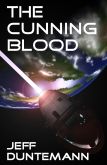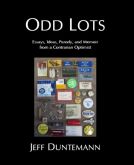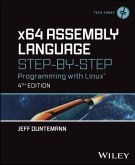Odd Lots
- Here’s another hyperenergetic instrumental piece—with a short rest in the middle, granted—from Joseph Curiale, he of “Sky Blue After Rain.” It’s called “Double Happiness,” and it’s nutso optimistic, kinda like…me.
- Speaking of music, I remain and have always been puzzled why the purely orchestral works of Leroy Anderson are not considered “classical” and are not played on classical stations like our KBAQ. Some are quirky, like “The Typewriter,” but my all-time favorite Anderson composition, “Bugler’s Holiday,” which is really a manic trumpet concerto, somehow doesn’t qualify. Too fast? Hey, if “Sabre Dance” is considered classical, why not “Bugler’s Holiday”?
- Video generative AI is evidently getting so good that people are making bank–big bank–on slop AI videos, some that can’t easily be told from real videos. It’s more than a little scary. I don’t either make or consume video as a rule, but I would be interested in seeing a verifiably AI-written SF novel.
- Here’s another piece that nails why I think generative AI is scary. Watermarks? If an AI can make photorealistic videos, it can fake a watermark. Maybe something incorporating blockchain as is done with NFTs. I’m no expert on blockchain, but this intro to blockchain and NFTs sounds like it’s impossible to replicate an NFT—which suggests a way to prove that a video was not done with AI.
- In case you missed it: Lazarus 4.2 (Built with Free Pascal 3.2.2) was released on July 22. It’s a bugfix release, but hey, bugs are annoying and Lazarus is amazing. Take every release that happens and install it.
- I grew up in Illinois and have always been at least a little interested in monsters, so why did it take 73 years for me to ever hear of the Enfield Monster? Sure, Enfield is at the opposite end of Illinois from Chicago, a long way from anywhere, with all of 794 inhabitants—and only 764 when the monster came calling in 1973. I guess without Internet, even for an eccentric and boundlessly curious 21-year-old, some things just come and go unnoticed. By me, at least. It makes me wonder what other monsters I’ve never heard of.
- Ars Technica points out that it generally takes a garage with a high-current 240VAC outlet to charge an EV at home. And—wow, how could this be possible?—a great many Americans have garages so full of stuff that they have to park their cars outside. Yes, it’s possible; actually, the honest truth, as we see every time we drive around our neighborhood.
Posted in: Odd Lots.
Tagged: ai · cars · EVs · lazarus · monsters · music · pascal












As a trumpet player beginning in 1960, I always loved “Bugler’s Holiday”!
Regarding the last point: a couple of years ago, we had to tear down our decrepit old single-car garage and rebuild. Took the opportunity to run a 240V line to the new one, and make sure there was plenty of room for storage as well as parking. You can have both! (Also ran a gas line so that at last we could have a heated garage; good to have in the Great White North.)
I drive a plug-in hybrid Hyundai Tucson and using the 240V charger is 6 times faster than simply plugging in to the 120V outlet. I’m glad I made that choice when we did the rebuild.
Yeah, I’ve been charging my pure-electric 2022 Nissan Leaf using a 120V outlet in my garage for a few years now. I would agree that the majority of Americans would probably be very unhappy with how long it takes (40 kWh battery, going from 10% to 100% with a regular 120V outlet takes ~24hrs in round numbers, but normally I go from 40% to 80%, which can be done overnight). Dropping from 80% back to 40% gives me 4 trips to/from my job (8 miles each way / 16 miles round trip), so for me it works fine. But for most Americans who use their cars a lot more than I do they would really feel the pain and want to be doing 240V charges (or DC fast charges at home – which is possible if money is not a factor – I personally do consider money to be a factor though). I am in the process of also adding an appropriate 240V outlet to my garage, I just submitted the electrical drawings for that to my city, hopefully I’m able to get a permit to do that work within the next week or so. In my case it is a pretty easy job because my electrical panel has space and capacity for the add-on without needed any upgrade, and the electrical panel is in the garage, so the wiring run is literally only a couple feet. As I say above, I really don’t need the 240 V charge capability but will be a nice luxury on my rare heavy-use days.
I have to say that the folks at Ars Technica are pretty clueless re EVs…has it not occurred to them that what is hurting EV adoption are the time it takes to charge one when you are taking a trip; the significant range reduction in cold and inclement weather and the cost, including depreciation. If people really wanted one, they would clean out a spot in their garage. What a lame premise for an article.
Of course, I have a good excuse, I have two non-depreciating cars in my garage and that is why my newer daily sits outside.
We have two EVs – a Nissan Leaf and a Chevy Bolt. The Leaf is only used by my son to commute to work and he charges his car once a week from the 120V outlet on our porch. We use the Bolt for everything else so we got a 240V level 2 charger for our garage. It is essentially like getting an electric dryer outlet in your garage. Not expensive. A friend has a Tesla and just uses his 120V outside outlet.
Owning electric cars has been simple and inexpensive. The only maintenance for the two cars over the two years we’ve owned them has been to rotate the tires, refill windshield washer fluid, and I might need to get new wipers soon. That’s it.
By the way, the range reduction in cold weather also happens to fossil fuel cars. Their gauges are just so imprecise, you don’t realize it. Dept of Energy tests show fuel economy can drop 15% at 20 F vs 77 F and even more for short trips.
It has always struck me that EV adoption would be much faster/smoother with some standardization. Develop a standard battery interface (connector, data negotiation, voltage selection, etc. – something that will accommodate advances in battery technology), then develop a standard battery pack – I’m picturing something flat and rectangular, maybe a four foot square that’s six inches thick, which could be (relatively) easily inserted and removed from an appropriately-shaped slot on the bottom of the car. Drivers would own their cars, but effectively rent their batteries, and “boost stations” would simply swap battery packs for a fee. These stations would stock charged batteries (and recharge the ones that got swapped in), drivers would have about the same delays and convenience as they do at gas stations today, and range would be much less of an issue outside of “charge deserts,” where recharge stations are sparsely located. Obviously, there are technical and economic issues to work out, as well as the usual nonsense that will occur during standardization (see https://xkcd.com/927/ ), but this seems like a good path toward wider adoption of EVs.
That is my big blocker for an EV – we have a 1950’s ranch-style home where the garage had been turned into a “bonus” room before we purchased (it’s very nice, lots of windows, skylights, vaulted ceiling, underfloor heating, fireplace)…
That would mean having to put in some sort of exterior-rated charging plug (essentially a commercial unit meant for outdoor usage) and then conduit along the outside of the house.
So – it’s a “no-go” for now.
Awhile back, I recall seeing some news stories about an EV company that had essentially swappable battery packs – you would drive into a location and the pack would be removed and swapped in an automated fashion. There are upcoming vehicles that have something similar – which is great for long-term servicability:
https://thedriven.io/2025/08/27/nio-firefly-australias-first-ev-with-battery-swapping-capabilities-now-approved-for-sale/
I also played trumpet in high school band in the 1960s. I loved Bugler’s Holiday, though it was beyond our meager talents to play it well.
I’ve been building and driving EVs a *long* time (since the 1970s). It’s sad to see the misinformation spread by Ars Technica and the other industry pundits. Anyone who *does* own an EV knows that:
1. Almost all EV charging is done at home — not at expensive for-profit charging stations.
2. The actual battery charger is *in the car* — the “charging station” is just a fancy extension cord with a special connector. Only the very high power “superchargers” are external.
3. 120v charging works because you’re not likely to use all of your EVs range every day, and it has all night to recharge anyway. I have 240v in my garage, but have hardly ever needed to charge with it.
4. Outdoor AC outlets have been required by building codes for at least 50 years. In almost all cases, they are free to use — just ask. In northern states, they are frequently there for vehicles with block heaters so they’ll start in the winter.
5. Standardized batteries and swappable packs are common in industrial EVs. Automakers could do it, but don’t want to.
I think EV adoption is limited not by technology, but by politics and profits. Governments would lose a huge amount of revenue from gasoline taxes, and companies won’t support EVs unless they can make a big profit doing it.
>> In northern states, they are frequently there for vehicles with block heaters so they’ll start in the winter.
My middle kid’s first paying gig as a professional ballerina was with a company in Bismarck ND; thanks to the Net of a Billion Lies finding a block heater coil was straightforward, but try finding a mechanic in Florida that knew what to do with it :-). Her apartment building had a row of dual 120v outlets along the wall next to the parking lot and everyone had extension cords to run to their grills to plug into at night.
Anderson’s works belong to an endangered species, light classical music. Over the last couple of generations, classical music programming — live and on the radio — has gotten much more “serious”, Beethoven, Brahms, Tchaikovsky, Wagner. You can still by recordings of Enesco Rumanian Rhapsody or Grofe’s Grand Canyon Suite, but when was the last time your local orchestra. played them? Radio stations are almost as bad. Sabre Dance gets a pass because it’s from a ballet and Khachaturian wrote some “serious” works — and he’s foreign, Anderson and Grofe are Americans. Last time I listened, WRR in Dallas was still playing Bugler’s Holiday, but I don’t listen often since I don’t have a commute to work any longer.
Our classical station here in Phoenix, KBAQ, plays Enesco and Khachaturian regularly, and even modern oddball pieces like “Sky Blue After Rain” and “Double Happiness” from Joseph Curiale which suggest an energetic evolution of a passing radio trend back in the 70s and 80s, “New Age” music. This was “instrumental impressionism” and intended to relax the listener. Me, I wanted energy in my music. When we lived in California there was an AM station called KLRS (“colors”) in Santa Cruz on 1080 (I think) that played New Age, but KLRS and New Age music are (as best I can tell) gone into history.
WBJC (Baltimore and on-line) plays an eclectic mix from groups (from soloists to orchestras) that primarily play classical music. They frequently play light classical works from Anderson, Coates and others. On the Sunday evening Toccata you may even hear accordionists playing classical works.
YourClassical (Minnesota) also plays “non-traditional classical”; I first heard pieces from Apollo’s Fire’s Sugarloaf Mountain album there.
I’ll have to look into YourClassical. Music discovery is a tricky business, and one I’ve pondered for many years. In poking around about the topic of audio streaming I found https://www.accuradio.com/, which has hordes of channels, each with a different flavor of music. A friend pointed me at https://www.aor.am/, Arctic Outpost Radio, based in…Svalbard.
I’ve also heard Bugler’s Holliday on WRR, as well as other Leroy Anderson. My community band has a dozen or so Anderson pieces in the library. His “A Christmas Festival” is a stand-out among the mostly mediocre Christmas genre.
WRR actually plays a bit of wind band music, which I appreciate. Modern composers aiming at high end college and semi-pro bands write some pretty good stuff.
I still listen regularly to “Hearts of Space” at https://v4.hos.com. It’s an eclectic mix of all kinds of music that you *won’t* hear on populst radio. Most of it is definitely interesting and pretty good good. I’ve heard programs of works by Leroy Anderson, Brian Eno, Mary Fahl, Harold Budd, etc. but there are also occasionally programs out of left field (Tuvan throat singing, Tibetan chant, New Age, Indian devotional, and such.